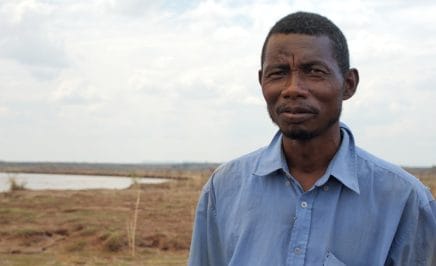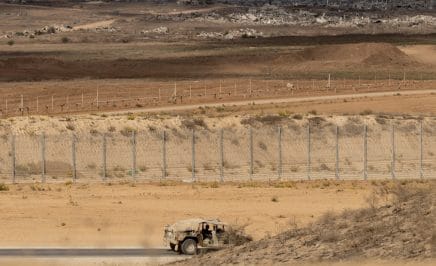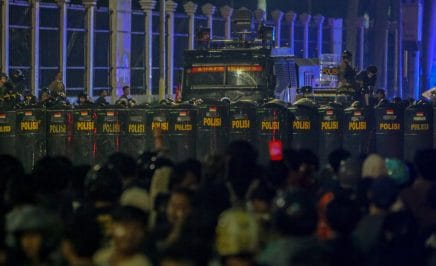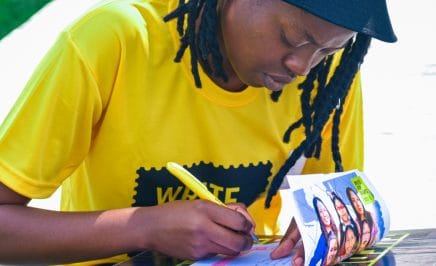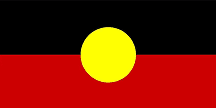Elections are a critical opportunity to shape our nation’s future. What kind of country do we want Australia to be? Who should represent us? What values should guide our leaders?
As Australians go to the polls next month, we have the opportunity to put human rights on the political agenda.
If you’re voting for the first time or looking to brush up on the basics of Australian democracy, here’s what you need to know.
- When is the next federal election?
- What am I voting for?
- What does the federal government do?
- How do I enrol and vote? Where do I go?
- How do I know who to vote for?
- What is a political party?
- Why do I need to vote?
- What is Amnesty calling for?
When is the next federal election?
Every 3 years, Australians vote to decide who will form the next Federal Government and Parliament, entrusted to make laws and decisions that impact all of us on our behalf.
The 2025 Australian Federal election will be held on Saturday, 3 May 2025.
What am I voting for?
Australians will vote for candidates to represent them in the House of Representatives and the Senate.
In federal elections, a preferential voting system is used. That means that voters will note on their ballot paper their order of preference for the candidates. Here’s more information on how that works.
House of Representatives
Australians will elect a member to represent their electorate in the House of Representatives. To do this, voters will note numbers starting from 1 in order of preference beside every name listed on the ballot paper.
To be elected, a candidate must have an absolute majority of votes (more than 50% of the total votes). If no candidate gets an absolute majority, the candidate with the least number of votes is excluded from the count with their votes transferring to the candidate voters mark as their second preference. This process continues until a candidate has an absolute majority and is elected.
There are currently 150 electorates, each with the roughly same population of citizens eligible to vote. Each electorate has a representative in the House, so there are 150 members.
Senate
Australians will elect senators to represent their state or territory. There are 12 senators from each state and 2 from each territory, hence a total of 76 Senators.
The counting system for the Senate is designed to ensure that senators are elected in proportion to the votes in that state or territory. Voters can choose to vote above-the-line or below-the-line.
- If you vote above-the-line, that means you will note on your ballet paper from 1 to 6 your preferred parties or groups. Your preference for candidates in the chosen parties or groups are listed below the line.
- If you vote below-the-line, that means you will note on your ballet paper from 1 to at least 12 your preferred individual candidates.
To be elected, a candidate must receive a quota or proportional representation of the state or territory votes. Senators are elected for six years as opposed to the House of Representatives whose term is for three years. Hence every election, voters in each state vote for six senators.
Forming a government
After a federal election, the party (or group of parties) that wins more than half of the seats in the House of Representatives forms the government.
To stay in power, the government must continue to have the support of the majority in the House of Representatives. While the government is formed in the House of Representatives, it also has members in the Senate. However, it may not always hold a majority of seats in the Senate.
What does the federal government do? How is this different from state and local governments?
There are three levels of government: federal, state, and local. To put it simply:
- Federal: The federal government is responsible for national issues, making laws for all of Australia. These includes issues relating to foreign affairs, social security, industrial relations, trade, immigration, currency and defence.
- State: The six state and 2 territory parliaments make laws specific to their state or territory. These include issues relating to justice, consumer affairs, health, education, forestry, public transport and main roads.
- Local: The councils are the decision-making bodies of local governments. They have responsibilities for issues such as local road maintenance, garbage collection, building regulations and land subdivisions, public health and recreation facilities such as swimming pools.
Each level of government has its responsibilities, although in some cases these responsibilities are shared. For example, while the federal government looks after issues like immigration and defence, it also has a shared responsibility with state governments to look after the environment, public health, and education.
How do I enrol and vote? Where do I go?
Voting and enrolling to vote is compulsory for all Australian citizens 18 years and over. If for any reason you do neither, you may be fined. Make sure you’re enrolled to vote by the ‘close of rolls’ date – 8pm local time Monday, 7 April 2025.
Enrolling to vote is easy – you can do so either online or via paper form. To enrol to vote for the upcoming federal election, go to the Australian Electoral Commission (AEC) website. To check or change your enrolment details including your address or name, you can visit the confirm my enrolment page on the AEC website.
There are several ways you can vote in the upcoming federal election.
On polling day, you can vote at any listed polling place in your state or territory. Polling places are usually local schools, churches or community halls. If you happen to be interstate on polling day, you will need to vote at an interstate voting centre.
Alternatively, there are some options to vote before polling day if you’re unable to get to a listed polling place on the day (see early voting eligibility criteria here). You can:
- Vote at an early voting centre in Australia (opens from Tuesday, 22 April 2025).
- Apply for a postal vote.
- If you’re overseas during the federal election period, you may be able to vote at an overseas voting centre or by post.
Mobile polling teams will visit some residential care facilities and remote areas of Australia, as well as some homeless shelters and prisons, and voters who are blind or vision impaired can use telephone voting to cast a vote using our dedicated phone service from any location.
How do I know who to vote for?
Everyone must make their own choice about which candidate to vote for. We encourage you to do your research of the policies of each candidate which can usually be found on the website of political parties and independent candidates.
At Amnesty, we are committed to empowering our incredible community of change-makers to put human rights on the political agenda by voting for candidates whose policies will align with challenging the human rights injustices we continue to see.
What is a political party?
A political party is an organisation that represents a group of people or a set of ideas. Party members can suggest ideas for party policies, help choose party candidates for federal, state and local elections and support election campaigns.
Political parties aim to have members elected so they can share their views and contribute to decisions made in Parliament. Members of parliamentary parties generally work as a team and vote the same way on issues.
- Major parties are political parties with enough members elected to form a government or opposition.
- Minor parties do not have enough members elected to form a government, but along with independents (members who do not belong to a political party), their votes may affect outcomes if the government and opposition disagree but do not have enough members to win a vote by themselves.
- Coalitions are formed when 2 or more political parties agree to work together to create a bigger group.
- In addition to political parties, independent candidates can contest seats in both Houses.
Why do I need to vote?
Human rights are under siege. Here in Australia, the government continues to violate the rights of refugees and people seeking asylum. Indigenous children are over-represented in the prison system. The cost-of-living crisis has left more people struggling to access housing and healthcare. And without a Human Rights Act, people can’t take action to challenge these injustices.
Elections are a critical opportunity to shape our nation’s future. What kind of country do we want Australia to be? Who should represent us? What values should guide our leaders?
Voting is both a privilege and a responsibility of all Australians. By using our voice, we can ensure that the leaders of our government make decisions and pass laws that protect our human rights.
What is Amnesty is calling for?
Our agenda for the next Australian Government offers a roadmap for action — to respect human rights here at home and abroad, ensure Aboriginal and Torres Strait Islander children have an equal start in life, provide safety for those seeking refuge, and establish Australia as a human rights leader in the region and globally.
We call on the next Australian Government and Parliament to:
- Legislate a national Human Rights Act that transforms Australia’s approach to human rights, justice and equality.
- Take federal leadership in reducing the over-imprisonment of First Nations children and preventing abuse in youth detention centres.
- Adopt a humane and generous policy to support refugees and people seeking asylum.
- Promote and defend international human rights.
Human rights are not an abstract ideal — they are the foundation of a just society. Now is the time for Australia to stand firm and lead with principle, courage, and compassion.
Ahead of Australia’s next federal election, we must use our voices to take a stand against human rights injustices. Take action now or check out our top reads to help keep you informed on the latest issues.
Authorised by Sam Klintworth, Amnesty International Australia, Sydney/Gadigal
Amnesty International is a global movement of more than 10 million people who take injustice personally. We are campaigning for a world where human rights are enjoyed by all – and we can only do it with your support.
Act now or learn more about our human rights work.

